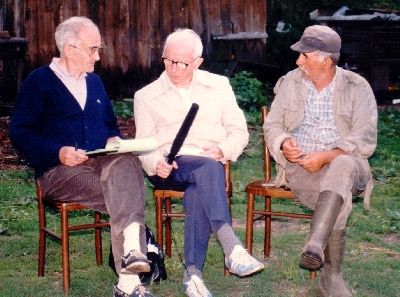
Marian Olszuk
[back] Eye Witnesses
In 1942-1943, the 'extermination camp' area was practically devoid of trees or
large shrubbery. As a result, the neighbouring farm folk and passers-by could
easily observe, through the barbed-wire fence, the prisoners and the guards as
well as the various buildings of a camp that is now said to have been
ultra-secret. From the perspective of someone facing the entrance to the camp,
the Olszuk family farm was located a mile and a quarter to the left, while their
plot lay, to the immediate right, 300 meters from the camp's eastern limit.
Thus, Marian Olszuk passed close by the 'extermination camp' every day that he
went to work at the quarry, and when he worked on the family plot, he was also
right near the 'extermination camp.'...Even though, of
course, he never entered the camp area, every day people gathered in groups
outside the front gate, openly engaging in barter and black market dealing.
....Had Marian Olszuk ever noticed signs of homicidal
activities by the Germans in this 'extermination camp?' His answer was No.
....Remarkably, after the 'liberation' of Poland and
after the war, no administrative or police authority questioned him about what
had taken place at Treblinka. After the war there were official commissions of
inquiry, which issued extravagant reports, comparable to the Soviet report on
Katyn (USSR-008). But none of those commissions ever asked the Olszuks to
testify. All the same, the official camp guide, Marja Pisarek, coldly asserted
in 1988 that "No one in the vicinity will talk to you". But Marian Olszuk,
obviously, was able and willing to talk to us at length, and, unlike another
Polish witness, clear-headedly.
[1988] Treblinka: An Exceptional Guide By Dr. Robert Faurisson

Dr. Robert Faurisson, Tjudar Rudolph, and Mariam Olszuk, in Treblinka, June 1988.